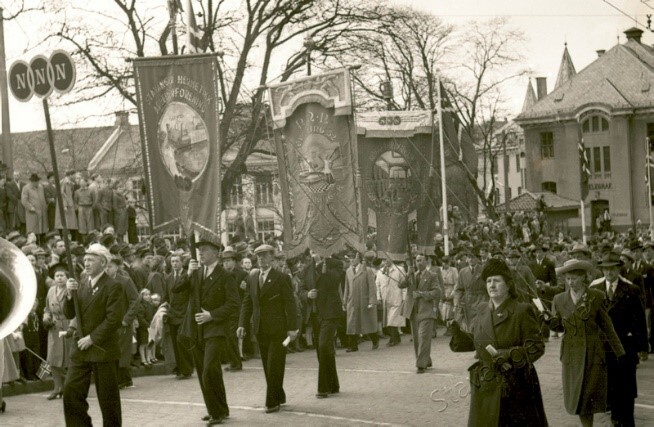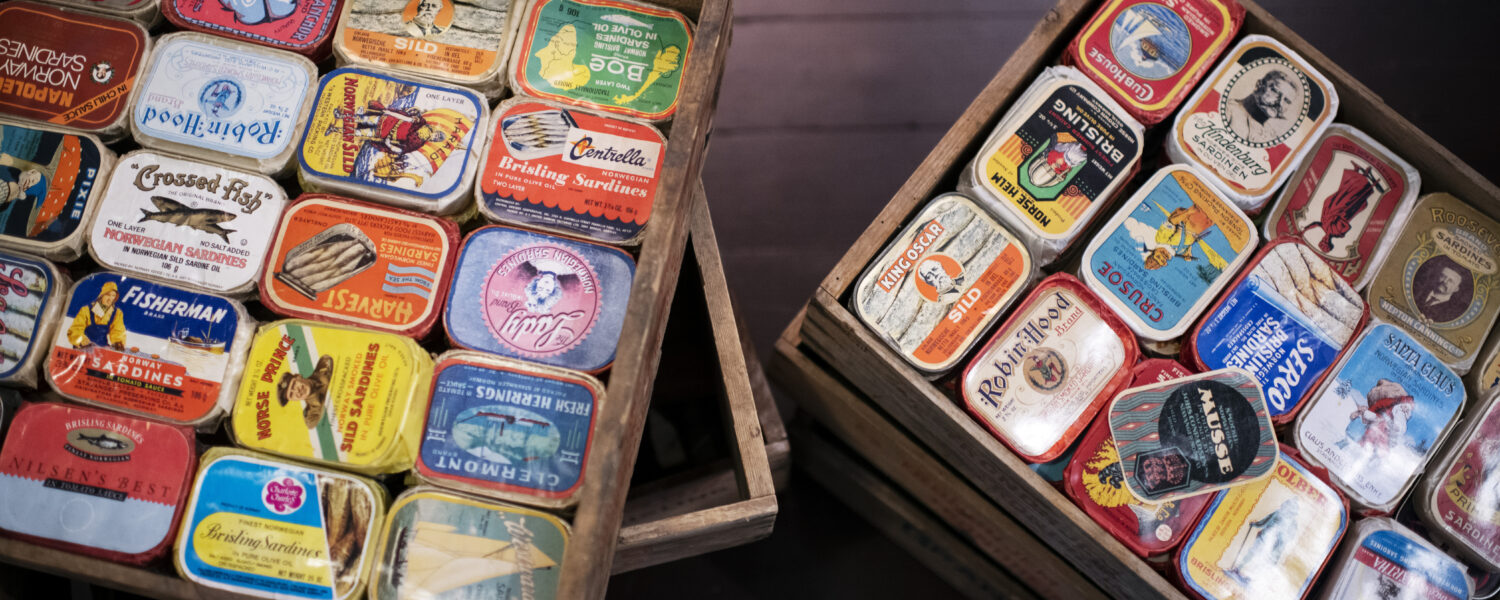Professions and working conditions
The canning industry
Learn about the Norwegian canning industry.
The workers
Many different jobs need to be done in a cannery. Learn about the occupations and persons from the Bjelland Factory No. 6, Star. How much did a threader and a smoker earn, and how long were the work shifts in 1916?

Working conditions and the struggle for rights
Cannery workers faced many challenges. Most employees were women who worked seasonally. Low wages and long shifts were just two of the challenges. To improve their working conditions, they organised themselves and went on strike. In this exhibition, you can see one of the labour union’s banners and learn about the workers’ struggles.

Export
In 1841 Norway began exporting canned goods. Through the years it has exported these goods to more than 140 countries on all continents, even Antarctica. Learn about the work with industry exhibitions, brand-building and the establishment of international contacts. Such efforts resulted in canned goods being one of Norway’s largest export products for many years.

Shared solutions
This exhibition shows how the canning factories worked together to solve mutual problems. The first successful collaboration was De Norske Hermetikkfabrikanters Landsforening (the National Cannery Association of Norway). Later, the industry collaborated on establishing a joint advertisement office, laboratory and canning school. Several factories also eventually worked together to operate a freezer ship.

Stavanger - The canning city
Learn about Stavanger’s canning industry. At its height, 72 percent of the city’s industrial workers were employed by the canneries and their supporting industries. There are still many traces of these businesses in Stavanger.

The exhibition is financially supported by Bergesenstiftelsen, Christian Bjelland and King Oscar.
